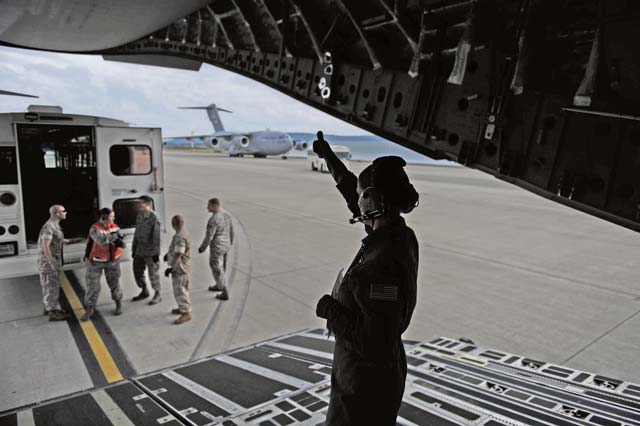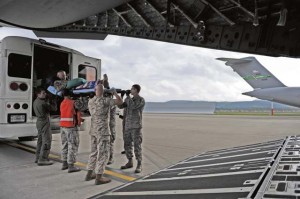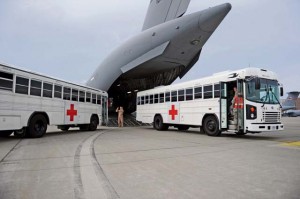
When service members are injured downrange and need to receive specialized medical attention, they go to Landstuhl Regional Medical Center to be treated. They are then transported, by the Contingency Aeromedical Staging Facility on Ramstein, from LRMC to the Ramstein flightline where they receive care before they are transported elsewhere for further attention.
The CASF plays a major role in the transportation and care of wounded warriors returning from deployed locations.

“At the CASF we transport patients who were downrange from Landstuhl Regional Medical Center to, usually, Joint-Base Andrews in Maryland,” said Staff Sgt. Andrezej Wozniak, 86th Aerospace Medicine CASF operations NCO in charge. “From there, the patients go somewhere else stateside, wherever they’re receiving additional care.”
Regardless of the injury, if a patient comes back from a deployment, the CASF takes care of them. In an average month, the facility supports approximately 250 to 300 patients with a wide array of injuries.
“We see all sorts of patients from sprained ankles to roadside bombings and shootings,” Wozniak said. “We see it all.”
Senior Airman Kheona Ratliff, CASF health service manager, said the CASF makes the transition as smooth as possible for the patients and ensures patients don’t incur any further injuries. Since the main objective at the CASF is patient movement, as well as hospitality, the team is very hands on and attentive to the patients.
“At my other assignments I was checking medical records and wasn’t feeling as satisfied as I am now,” Ratliff said. “I work closely with the wounded warriors and like interacting with them. Being in the CASF makes me feel like I’m making a positive impact in the Air Force.”
The facility located on Ramstein is one of six CASFs in the Air Force.

Depending upon where a medical Airman is stationed will determine whether or not they will work at a CASF.
“When I worked downrange in an ICU (intensive care unit) in Bagram, we sent a lot of people over here, so I was able to see another side of the patient movement process,” Wozniak said.
The CASF first opened its doors to service members in 2003 during operations Iraqi and Enduring Freedom.
As long as Airmen, Soldiers, Sailors and Marines need support, transportation and medical care from the battlefield, the CASF will remain available with open arms to help every way they can.


